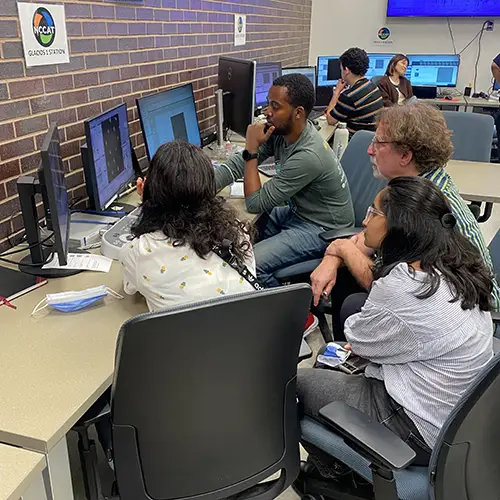Dirty Proteins Yield Photosynthesis Insights

Since groundbreaking work in the 1960s and ’70s, scientists have been using industrial detergents to extract and study membrane-bound enzymes. Most structures of these proteins have been studied in detergents, but a new method has emerged recently—Styrene Maleic Acid/Lipid Particles (SMALPs). Unlike other techniques, SMALPs use a special polymer to extract proteins directly from their natural membranes, keeping their lipid environment intact.
The Bruce Lab, in collaboration with the Long Lab in the Department of Chemistry, has spent the last five years developing new polymers that allow us to isolate essential thylakoid membrane proteins involved in photosynthesis, such as photosystem I (PSI), in high yields. They have created over 60 polymers to determine how their structures affect protein extraction. So far, they have successfully isolated PSI-SMALPs from various heat-loving cyanobacteria. Using femtosecond spectroscopy, they discovered that PSI-SMALPs show incredibly fast charge separation in less than 100 femtoseconds, which might be altered when detergents are used.
Recently, this project took Professor Barry Bruce and his graduate students (Kavya Penneru, BCMB, and Fida Ali, Bredesen Center genome science and technology program) to the National Center for Cryo-EM Access and Training in Harlem, New York.
There, they determined the structure of the PSI-SMALP using cryo-EM, making it the first-ever structure of a photosystem isolated without surfactants or detergents; it will also be the largest SMALP ever isolated. This groundbreaking research will provide new insights into the function of photosynthetic complexes in their natural state and provide important insights into how photosynthesis works.